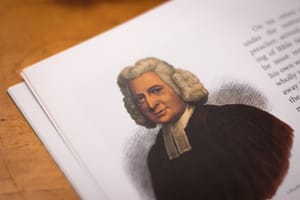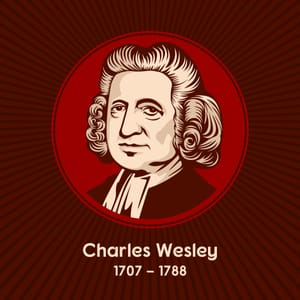The Clapham Sect and the abolition of the slave trade (2)
John Wesley encouraged William Wilberforce that his fight against slavery was a ‘glorious enterprise’, but warned him that ‘unless God has raised you up for this very thing, you will be worn out by the opposition of men and devils’ (May ET).
This month we look at the fierce opposition that the Clapham Sect faced. So institutionalised was the practice of slavery that the Claphamites reasoned that they could only end it by a two-step process.
They determined first upon abolishing the slave trade, as a means to the second step and greater end of full slave emancipation. But in securing abolition alone they faced huge difficulties.
Spiritually destitute
To begin with, the moral susceptibilities of the nation were at a low ebb. By 1740 the church had largely squandered its heritage of blessing, bequeathed by the Reformation and Puritan eras, and the nation’s morals were in an appalling state.
The aristocracy was ‘cultured, magnificent, and dissolute’; the poor downtrodden, ‘illiterate, sodden with gin, given over to vicious living and brutal pastimes’ (E. M. Howse, Saints in politics; George Allen & Unwin, 1953).
By 1790, some 50 years after the Evangelical Awakening, drunkenness, gambling, political corruption, kid-napping (sic), press ganging, prostitution and child neglect were widespread. Even 40 years after the Gin Act of 1751, one eighth of the deaths of London adults were still said to be through drinking excess spirits.
This low state of things manifested itself in British law as well. Although the abolitionist Granville Sharp won an important legal victory in 1772, he lost a notorious case nine years later.
In 1772, he pleaded the cause of runaway Negro slave James Somerset so ably that Lord Chief Justice Mansfield reluctantly pronounced that, ‘as soon as any slave sets his foot on English ground he becomes free’.
But in 1781 he failed to get the captain of the slave ship Zong convicted in a case that shocked even British society.
The Zong’s captain had ordered that 133 sickly slaves be thrown overboard. His reasons were that living slaves, unlike dead ones, were cargo. This meant their loss would be compensatable by insurers — at the rate of £30 per slave (£2,000 per slave in today’s money). There would have been no reimbursement if they had died on board ship.
At the ensuing legal wrangle between the insurers and ship’s owners, Lord Mansfield’s judicial opinion said it all. He averred that there is ‘no doubt that (though it shocks one very much) the case was the same as if horses had been thrown overboard’!
Prejudiced
The second obstacle facing the abolitionists was an intellectual one. Many British people accepted the view of ethnicity popularised by some of the Enlightenment philosophers.
Although it was still half a century before Darwin, these thinkers embraced a theory of human origins called polygenesis. This theorised that different human races were created separately and had not descended from one couple.
In an essay Voltaire said, ‘The Negro race is a species of men as different from ours as the breed of spaniels is from that of greyhounds … if their understanding is not of a different nature from ours, it is at least greatly inferior. They are not capable of any great application or association of ideas’.
Immanuel Kant wrote in 1755: ‘The Negroes of Africa have by nature no feeling that rises above the trifling … So fundamental is the difference between those two races of men [whites and blacks] … it appears to be as great in regard to mental capacities as in colour’. Little wonder that those with black skins were easily consigned to slavery (although, it should be noted, there were some white slaves as well).
Third, many British people had had no encounter with the horrors of slavery ‘in the raw’. Out of sight was out of mind.
Several prominent abolitionists had only become involved as a result of encountering slavery first-hand. The young lawyer James Stephen, while in Barbados, witnessed a miscarriage of justice against four slaves culminating in two of them being sentenced to be roasted alive.
Zachary Macaulay, at the age of 17, worked as an overseer on a Jamaican sugar estate. He returned to England sickened by the violence, and in his own words nearly ‘callous and indifferent’, but shortly afterwards was converted to Christ through the influence of his brother-in-law Thomas Babington.
Protective
Thomas Clarkson was a 25-year-old Cambridge University divinity student competing for a literary prize in 1785. He was set an essay by Vice-Chancellor Dr Peter Peckard, entitled ‘Is it lawful to enslave the unconsenting?’
Peckard had been alerted to the subject through reading Granville Sharp’s report of the Zong debacle. But the young Clarkson knew little about the subject and decided to research it. The more he learned, the more appalled he became. He found himself ‘overwhelmed with horror’. He wrote: ‘In the daytime I was uneasy. In the night I had little rest’.
He won the prize, but that had become unimportant. He rode back to London, meditating on the horrors of slavery. While resting his horse at Wadesmill in Hertfordshire, ‘a thought came into my mind, that if the contents of the essay were true, it was time some person should see these calamities to their end’.
The fourth obstacle was that the slave trade was protected by powerful vested interests. Slavery was the economic powerhouse of the ‘West India planters’. These were rich, dynastic families possessing large Caribbean sugar estates. Two-thirds of them were non-resident, living in wealthy English properties and employing salaried managers to look after their plantations. The Bertrams in Jane Austen’s Mansfield Park are a fictional example of such a family.
This class was well represented in Parliament, and especially in the House of Lords. It comprised peers and members of the aristocracy, who exercised enormous political and economic influence. Not surprisingly, they took exception to any interference with their ‘property rights’.
Another class with vested interests, and shamefully so, was the Church of England. The governing council of the Society for the Propagation of the Gospel in Foreign Parts included the Regius Professors of Divinity at Oxford and Cambridge, as well the Archbishop of Canterbury. Yet the society owned a 710-acre sugar plantation in Barbados, with more than 200 slaves.
Reactionary
Last, but not least, the abolitionists were up against a reactionary British establishment.
The royal family figured in this, and particularly the Duke of Clarence, third son of George III (and later King William IV).
The powers-that-be viewed the slave trade as integral to the well-being and security of Britain. They saw those manning the slave ships as the seamen who would one day man British war ships against the French. As late as 1807 Admiral Jervis, who was Lord Nelson’s superior, declared that abolition would ruin the British navy.
This conservatism was strongly reinforced by fear. Only four years after the French Revolution began in 1789, Louis XVI, Marie Antoinette and many French aristocracy lost in their heads in a bloodthirsty, egalitarian revolution that viewed neither nobility nor church as sacred.
‘Liberty, freedom and brotherhood’ were dangerous exports, and a programme to relieve slaves seemed tantamount to sedition. Any talk of improving the lot of slaves seemed bound to incite revolt.
Nor was this fear unjustified. In August 1792 there was an uprising of slaves on the French island of St Dominigue, which led to the massacre of hundreds of white settlers (and the emergence of Haiti as a free black nation in 1804).
The Clapham Sect were indeed to face the opposition of ‘men and devils’, yet they were to persevere against all the odds and win through. Evangelicals today facing enormous social and political pressures from anti-Christian groups should recollect this historic victory and not lose heart. ‘If God is for us, who can be against us?’ (Romans 8:31).
To be continued
Roger Fay



















